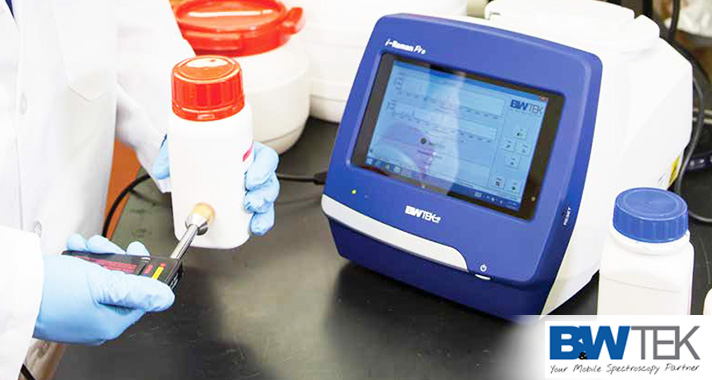Patented STRaman (See-Through-Raman) technology is a newly developed Raman technique to identify chemical species nondestructively beneath diffusely scattering packaging material such as plastics or tablet coatings.
Molecular spectroscopic technique
Raman spectroscopy is a well-established molecular spectroscopic technique for noninvasive and nondestructive chemical analysis.
It is used to identify mostly organic materials, such as carbon nanomaterials, controlled substances and hazardous chemicals, pharmaceutical raw materials, gemstones and minerals, pigments and paintings in art works, and diseased tissue.
Portability
The portability of the instrument has increased the adoption of Raman spectroscopy as a screening tool for samples without the need to take them to a traditional laboratory environment.
The sampling optics in conventional Raman instrumentation employ a focused design similar to confocal microscopes; for instance, both the excitation beam and the Raman signal beam are focused at the same spot. The sample is usually placed at this focal point.
In this way, excitation power density and consequently the Raman signal radiance are maximized at the sampled volume, and only a signal from this tightly focused volume is collected. This confocal design has the advantage of maximum throughput and can be used to measure samples inside transparent containers in the same way a confocal microscope performs optical sectioning. The confocal approach loses its effectiveness when the container diffuses the light strongly because the light can no longer be focused onto the materials inside the container.
The Raman signal for materials inside diffusely scattering containers is weak and is often accompanied by strong features from the container itself.
See-through Raman spectroscopy (STRaman)
See-through Raman spectroscopy (STRaman), developed in 2016, expands the capability of Raman spectroscopy to measure samples beneath diffusely scattering packaging material.
The system is designed to have a much larger sampling area than the confocal approach.
This design enhances the relative intensity of the signal from the deeper layers, thereby increasing the effective sampling depth, and allows the measurement of material inside visually opaque containers.
The larger sampling area has the added advantage of preventing sample damage by reducing the power density, as well as improving measurement accuracy by eliminating the variability detected when measuring with a small spot size on a heterogeneous sample. Additionally, the system can be easily adapted to a confocal configuration, allowing standoff, contact or microscopy analysis.
Penetrating plastic
Many solid chemicals are delivered in white plastic containers, often made of titanium dioxide-filled polyethylene.
The filler material scatters light and makes the plastic appear opaque. Laser light cannot be focused inside such containers due to the strong scattering, precluding the use of conventional Raman backscatter measurement designs.
Using STRaman, both the 785-nm excitation laser and the Raman scattered light can penetrate the plastic wall through a diffuse scattering mechanism, and its large effective sampling depth allows such materials to be interrogated and identified.
(Download the article below for full text).









